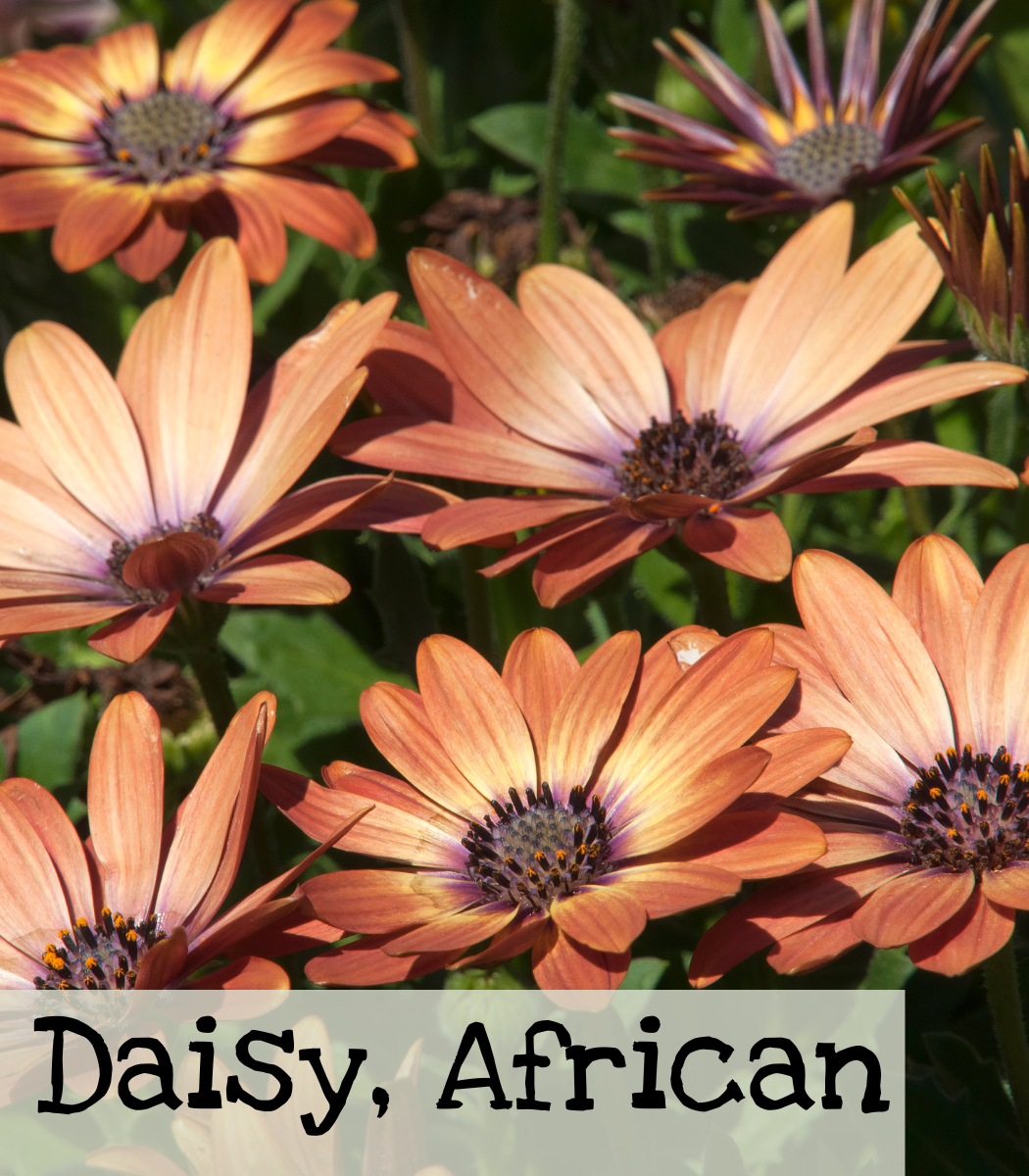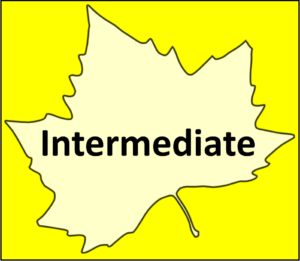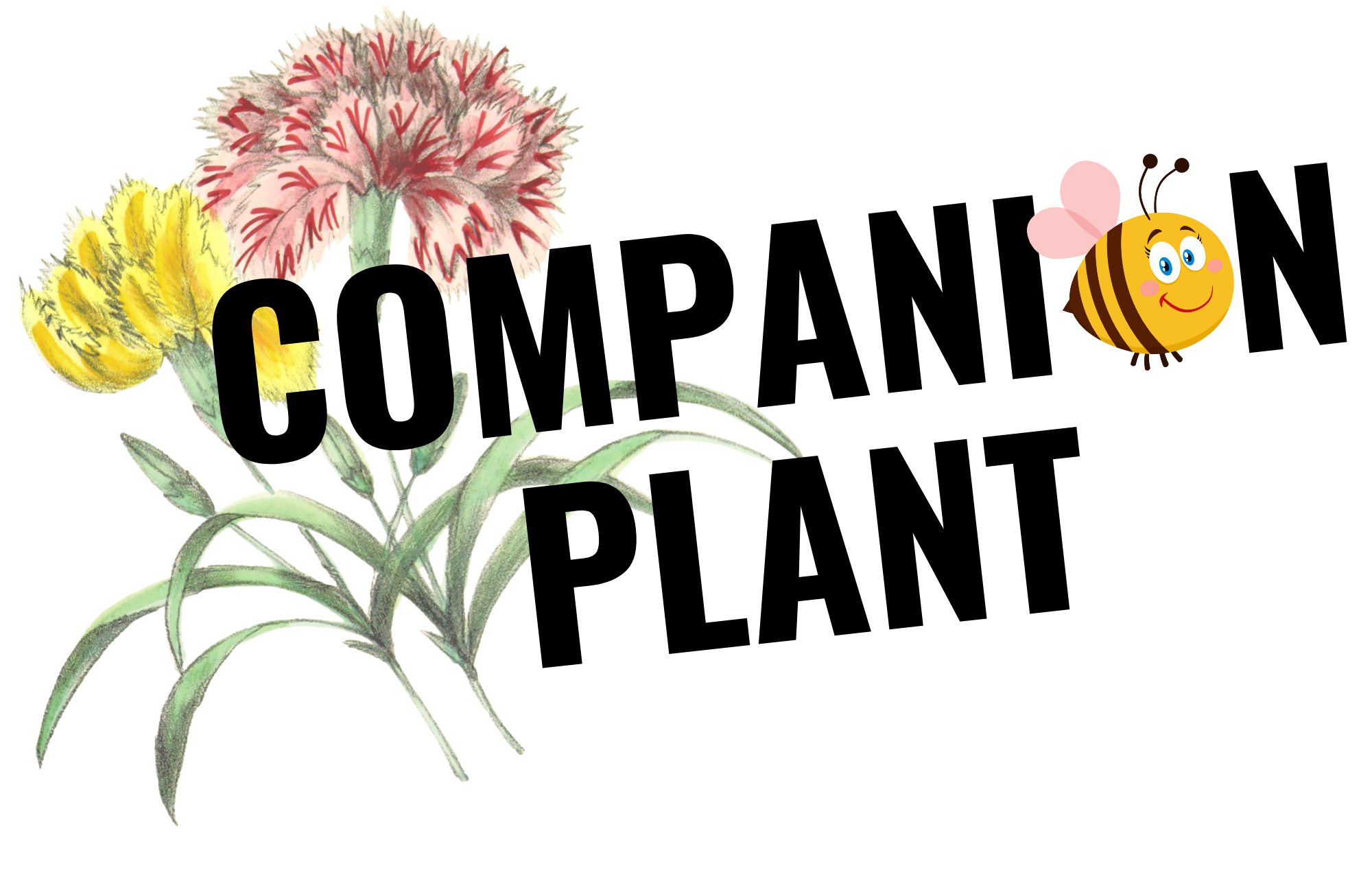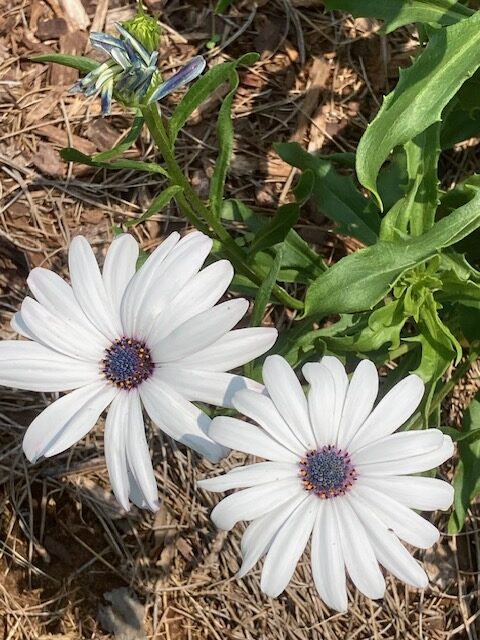
African Daisy
Originally from South Africa, the African Daisy is typically grown as an annual but is a perennial in frost-free areas. A perennial varitey is Gazania rigens.
|
Blue Disc |
|
Osteospermum ecklonis Other varieties may have a different scientific name. |
|
Easy |
|
Intermediate |
|
3 years if properly stored |
|
Annual |
|
7-21 days |
|
None |
|
Surface Sow |
|
60-65 F |
|
24” |
|
Seeds require light for germination Full Sun |
|
February, March, April, and May |
|
Yes |

Growing Tips




How to Start
Start indoors: 8-10 weeks before the last frost date.
Transplant: In April after the danger of frost has passed and after hardening off.
Direct Sow: After the danger of frost has passed.
Fall planting: Not recommended for northern GA. In frost-free areas, seeds can be directly sown in the fall.
How to Grow
To start indoors, start 8-10 weeks before the last frost date. Use sterile, pre-moistened seed starting mix. Then sow seeds into cells or pots. Gently press the seeds into the soil as they require light to germinate. Then place the cells or pots under grow lights. Keep soil moist but not soggy and pot up as needed. Or, direct sow after all danger of frost has passed by gently pressing the seeds into the soil. They can be very lightly covered with soil to keep them from blowing away. Keep them moist but not soggy.
Plant Care
Plant or transplant in full sun and well-draining soil. African Daisies will tolerate most soils as long as it is well-draining. They also dislike humidity, which is why it is intermediate to grow in GA. When growing in humid climates, create good air circulation with proper plant spacing. Space plants 12-18 inches apart.
Keep the soil moist but not soggy until the seedlings are about 4 inches tall. After that, less water is okay. African daisies are susceptible to fungal issues. Watering at the base and keeping the leaves dry will help prevent fungal problems.
Dead-head plants to encourage more to prolong the blooming season. But, leave some to save the seeds. Flowers bloom in mid-summer and are good, cut flowers.
Companion Planting
Daisies are a flower that you can put to work for you. Not only are they pretty flowers, but they also attract numerous beneficial insects to your garden. These beneficial insects will eat pests. This helps control the pest population naturally.
Plant them near your zucchini and potatoes to attract predators that will eat aphids and squash vine borers. If you struggle with leaf roller caterpillars in your green beans, daisies will help you! These are only some of the benefits daisies will provide. For a more complete list of companion plants, check out my companion plant video and list of companion plants.
My personal Experience
I grew blue disc African daisies. They are just stunning. (My daisies are pictured to the right.) I started them indoors, under grow lights. Then I hardened off and transplanted.
While they are beautiful flowers, they were planted to serve a purpose. As companion plants, these daisies were planted in my potatoes and between the jelly melon and zucchini. I threw one in my flower bed, just because they are gorgeous flowers. I wanted to attract ladybugs, lacewings, parasitic wasps, as well as, a few others. These predators help control the pests that bother zucchini, jelly melons, and potatoes. They seemed to help with the pests and were beautiful to look at.
They do require frequent deadheading to keep them blooming. Which is very important if you are using them as companion plants. They did well with the heat and they didn’t have problems with the humidity. But I did do proper spacing.
Don’t be alarmed if they flop over after strong winds. They will just spread a bit and create a beautiful mound of flowers. Or mine did anyway.

Seed Saving

Isolation Distance
Insect dependent for pollination. Isolate ½ mile to prevent cross-pollination.
Instructions
Select healthy, robust plants free of any signs of disease or insect infestation for seeds. Seeds carry the traits of the parent plant. Choose plants that exhibit the traits you wish to preserve. Consider bloom size, color and shape, as well as blooming time.
Allow the biggest and healthiest blooms to mature on the plant. Cover the seed head with a fine-mesh bag as soon as flower petals shrivel and die. Use an elastic band to hold the bag in place. This prevents seeds from spilling onto the soil before harvest.
Clip the flower head from the main stem once the seeds are dry and dark. Separate plant debris from the seeds by removing the mesh bag and placing the flower head in a paper bag and shaking to loosen seeds. Seeds settle to the bottom of the bag. Remove plant debris by hand.
Features
- Drought tolerant once established
- Poor soil tolerant
- Container friendly
- Attracts pollinators
- Good cut flowers
- Good for borders
- Blue Disc: Heirloom. A very striking daisy. The blooms are white with blue ‘eyes’. Thrives in the heat.

Plants dislike humidity. Combat this with proper plant spacing for good air circulation.
Plants will flop over when overwatered.
The ideal germination temperature is 60-65 F.
